As one of merely two surviving prehistoric Native American pictograph sites in Kentucky, the Asphalt Rock Pictographs provide a mysterious window into the past, easily accessible with minimal effort. Situated within a southwestern-facing rockshelter on a plateau in the Green River Valley, the rock art site is considered the finest collection of pictogrpahs in the Bluegrass State and a can't miss stop on a trip to nearby Mammoth Cave National Park.

To access the panel, simply drive down the packed gravel River Rd/Davis Ferry Rd from Highway 655/Segal Rd for 0.4 miles and park along the road. The GPS coordinates for the Davis Ferry Rd/River Rd and Highway 655/Segal Rd intersection are 37.189107, -86.361422
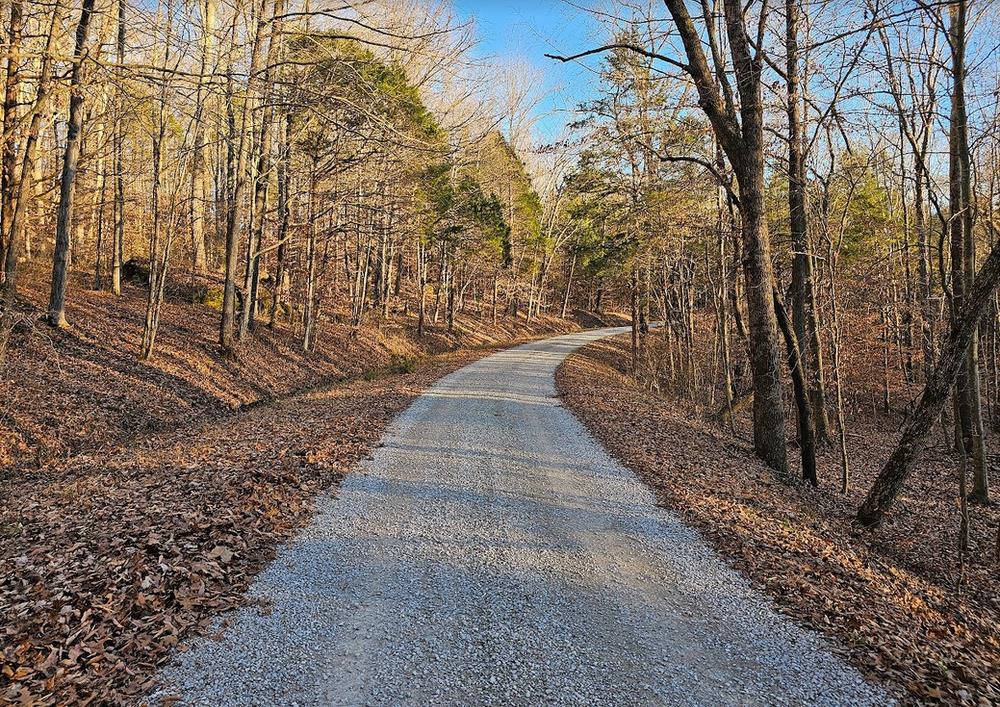
At 0.4 miles from Highway 655/Segal Rd, you'll spot a large rockshelter a few hundred feet to the left of the road and slightly uphill. The rockshelter is easy to spot when the leaves are off the trees, but in the summer months it will be challenging to view from the road.
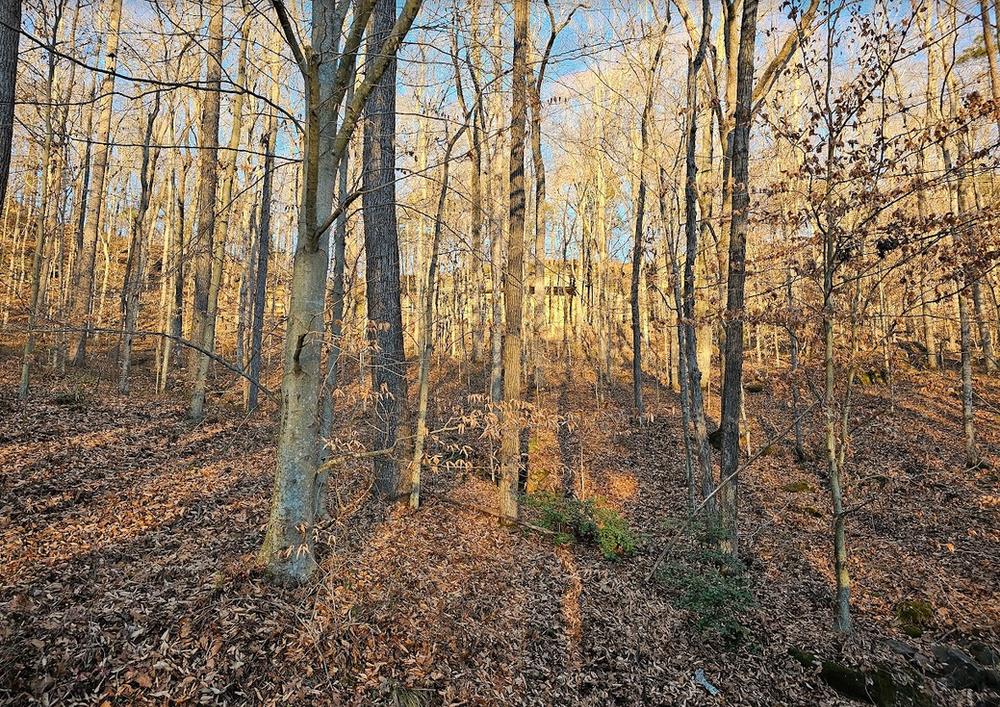
Upon reaching the rockshelter after a short walk, you'll encounter the pictographs near the left end, roughly eight feet above ground level. While the area in front of the rockshelter has undergone exensive and illegal excavations by those searching for artifacts, the panel itself maintains an impressive state of preservation, free from any indications of graffiti or defacement.
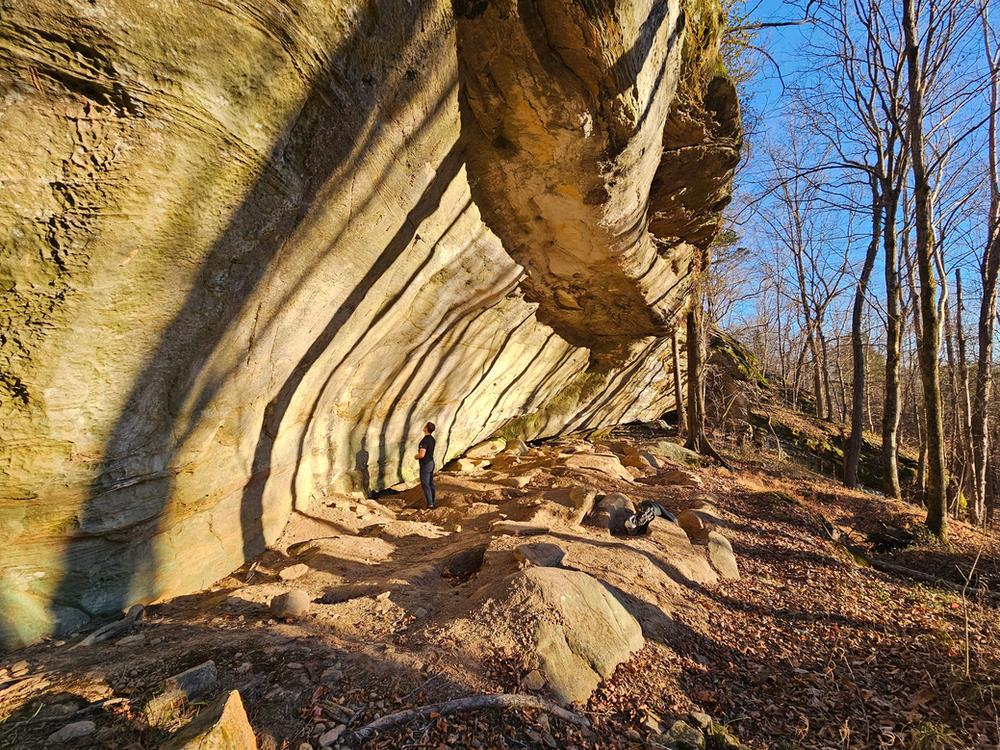
Among the discernable images on the panel, one depicts an anthropomorphic figure, possibly resembling a masked shaman or supernatural being, its arms bent at 90-degree angles and hands raised high. Below and to the left of the anthropomorphic figure, a small human-like face can be observed.
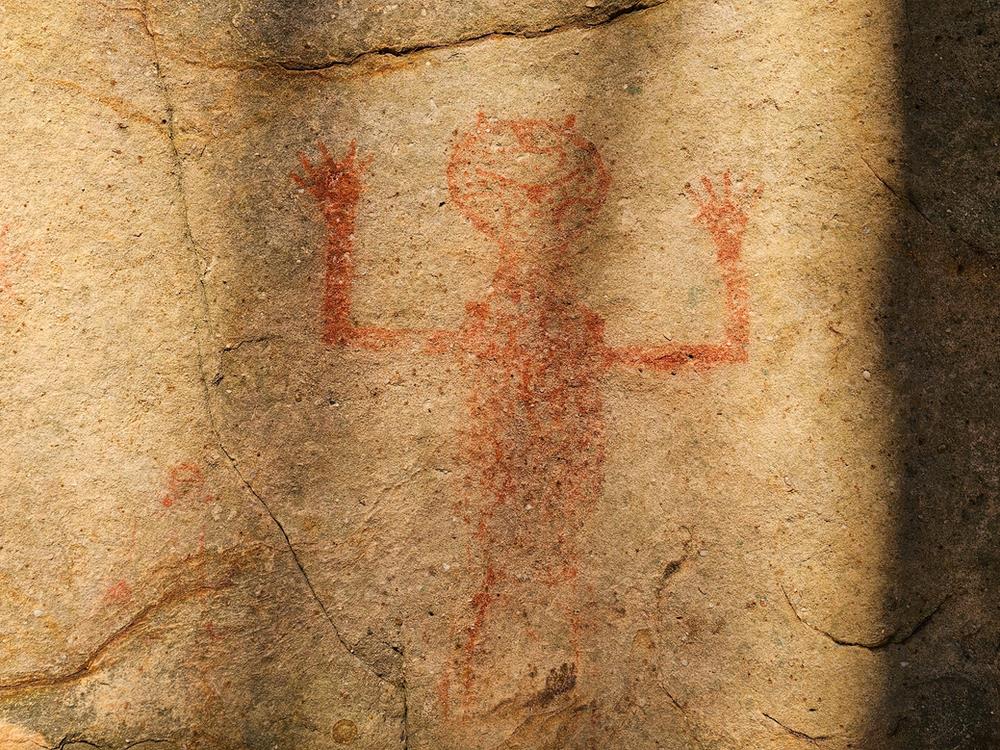
Numerous researchers have proposed that the large anthropomorphic figure displays feline-like features, but it's anyone's guess as to what its creator intended.
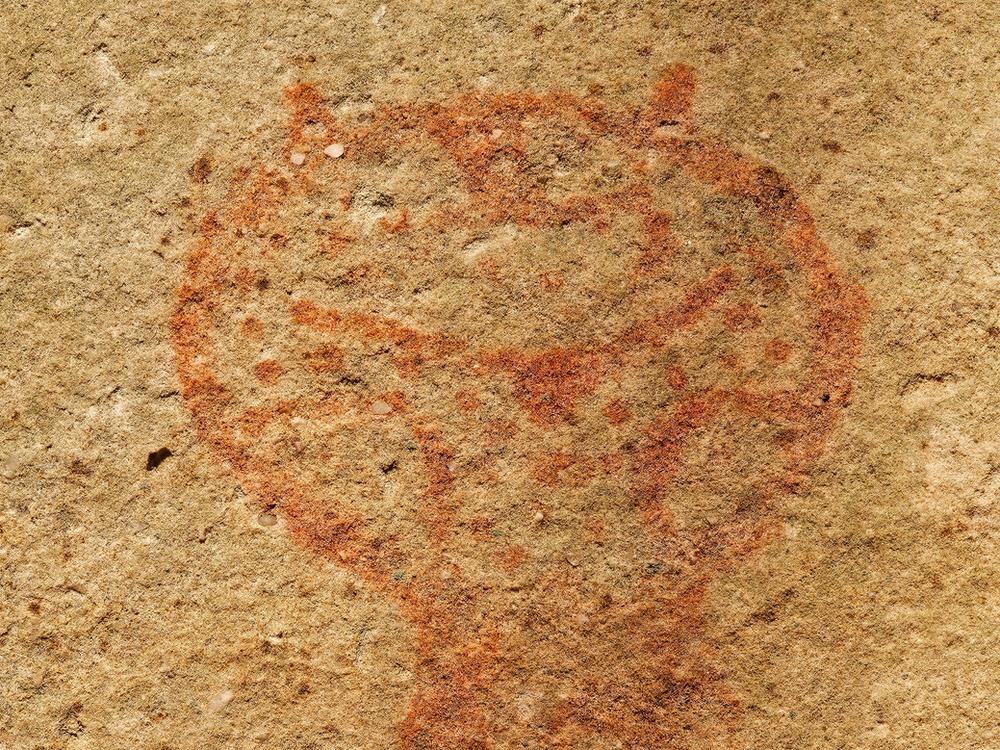
To the left of the large anthropomorph, there is a circular shield-like depiction, possibly symbolizing warfare or holding a cosmological significance, positioned above an hourglass-shaped figure. The shield-like image and hourglass-shaped depictions were originally outlined in red ochre, but that outline is no longer visible. Similarly, the lower section of the hourglass-like representation has completely vanished, leaving only the upper section visible.

Lastly, the portrayal of a small zoomorphic figure, likely representing a bird, can be observed immediately to the right of the panel's circular depiction. All of these figures were created utilizing natural ochre, a pigment derived from clay and iron oxide, recognized as the world's oldest known natural pigment.
When the pictographs were created and by whom remains a mystery today. However, archaeologists remain certain that these creations are attributed to a prehistoric Native American culture that thrived in the region, centuries or even millennia ago. The rarity of a site like the Asphalt Rock Pictographs in eastern North America, combined with their ease of access, renders them an unmistakable attraction for those exploring nearby Mammoth Cave National Park. However, it is crucial to refrain from touching the rock art, as the oils from human skin can rapidly accelerate erosion. Please, take only pictures, leave only footprints, and let others admire Kentucky's most impressive prehistoric artwork for as long as nature allows.
https://www.greatamericanhikes.com/post/visiting-kentucky-s-asphalt-rock-pictographs
 CampingSurvivalistHuntingFishingExploringHikingPrivacy PolicyTerms And Conditions
CampingSurvivalistHuntingFishingExploringHikingPrivacy PolicyTerms And Conditions
